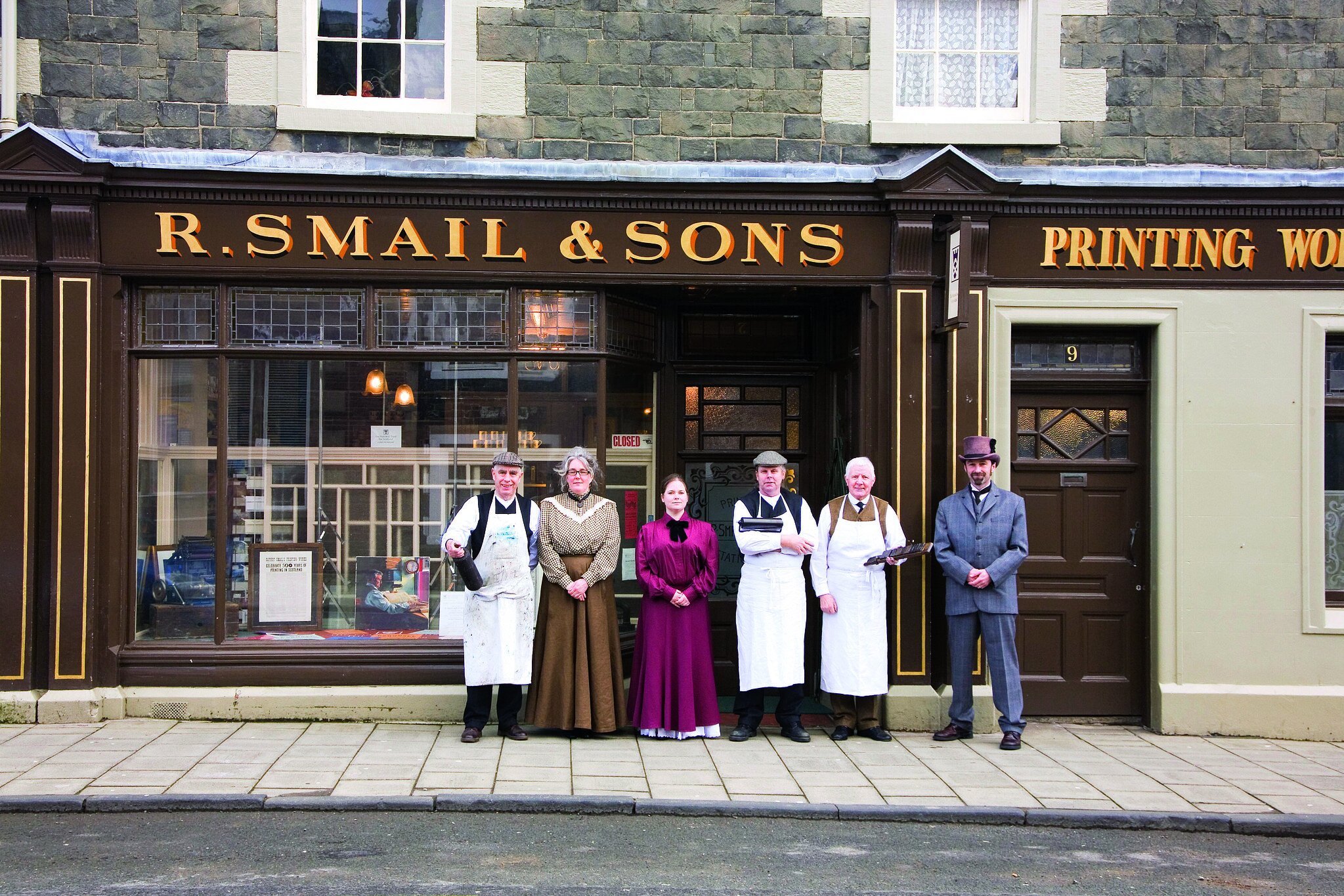History in Print
As part of our celebration of local arts & culture, we explore a truly unique museum at the heart of the community …
In the picturesque village of Innerleithen lies one of the National Trust for Scotland’s most treasured attractions. A living, breathing nod to Scotland’s industrial heritage, Robert Smail’s Printing Works is one of the oldest Victorian letterpress printers in the UK – and an extraordinary example of how art, culture and history are closely woven together across the Tweed Valley.
Opened in 1866 by Robert Smail, the printing works remained in the family for three generations before the purchase by the conservation charity in 1986. Run as a post office and a shipping agency during the 20th century, it continues to operate as a letterpress printers with a shop on the town’s High Street and printing works at the rear of the building that still house the paper store, case room and machine room.
A celebration of Victorian heritage at Robert Smail’s …
Look inside this living museum and you’ll see print workers continuing to honour traditional Victorian technologies to this day – with beautiful results. “Using traditional printing techniques helps provide an authentic and timeless style to our printed materials, with letterpress and relief printing offering a visual and tactile quality that can be lost with digital printing,” explains Gordon Stewart, National Trust for Scotland Operations Manager at Robert Smail’s Printing Works.
“As a conservation charity, we are keen to preserve these techniques for future generations, so it is important for us to keep these techniques alive and champion them through the production of modern printed materials that showcase the skill and experience of our printers.”
The printing works has an eclectic range of working presses in their collection, including a Columbian hand press from around 1860, an Arab Clamshell platen press dating from 1927, a Wharfedale reliance stop cylinder press from 1886 – one of only a few working examples in the UK – two Falcon platens and a 1953 original Heidelberg platen press. In addition, they have access to 450 cases of lead and wooden letterpress type, including some original typefaces that have never been digitised. If you are looking for traditional and bespoke, you have come to the right place …
The Wharfedale reliance press dates back to 1866
One noteworthy change has been the mechanism for keeping the printing presses turning. Robert Smail’s was originally powered by two waterwheels and a man-made Lade built for the town’s woollen mills. The historic Lade still runs beneath Smail’s paper store but the printing works moved to a gas-powered engine in the 1930s, eventually adopting electric motors in the 1950s. Don’t worry though: you can still admire one of the waterwheels that kept the business operating for over 60 years on a tour of the premises today.
A tour would also shed light on the artisanal printing methods Robert Smail’s looks to preserve and promote. Founders’ type, for example – the original process of producing individual, moveable, re-useable type developed by Johannes Gutenberg in 1455. Using type cast from an alloy of lead, tin, and antimony, text is composed by hand and then printed using traditional letterpress techniques. Like the methods employed in woodcuts and linocuts, the ink sits on raised areas of letter blocks and the paper is pressed against it to make a clear impression.
Getting to grips with text composition
The printing works is still a commercial letterpress business creating an impressive array of products from wedding invitations, posters, letterheads, business cards, paper bags and small books to greeting cards and stationery sets for the museum’s charming gift shop. The printers recently collaborated with retailer Paper Tiger to create a set of 24 greeting card designs for their Edinburgh shops –a clear sign that traditional printing techniques are back in fashion.
As the longest continually operational in-situ printing press in the UK, the Smail’s archives also provide a fascinating cultural history of the town and surrounding area. Alongside a range of items printed over the years for the local textiles industry, other artefacts help share the wider stories of the Tweed Valley. The St Ronan’s Standard newspaper printed between 1893 and 1916, the St Ronan’s Calendar printed yearly since 1878 and a poster for the St Ronan’s Border games printed every year since 1901 are all beautiful examples of typographical craftmanship, but also serve to capture the history of this small town and its people.
An archive of printed materials traces the history of Innerleithen and the local area
Further info
Robert Smail’s Printing is open from April to October. Visitors are invited to get their hands inky at one of the printworks’ seasonal workshops or guided tours. One-to-one teaching sessions also allow individuals to create posters, cards or artworks using the original letterpress type and machinery, helping to keep this traditional craft alive and inspire the next generation of printers.
Book a tour of Robert Smail’s Printing Works via the National Trust for Scotland’s eventbrite page.
Photo credits: all images courtesy of National Trust for Scotland.




